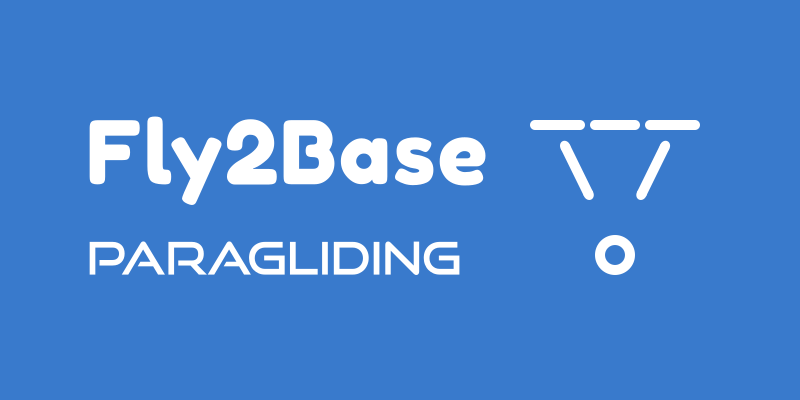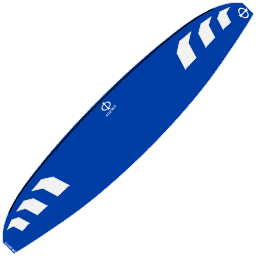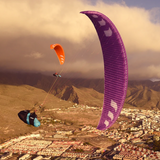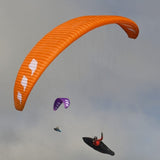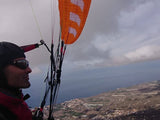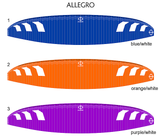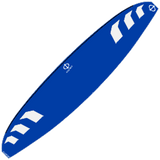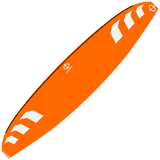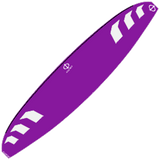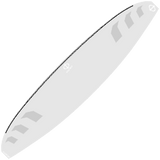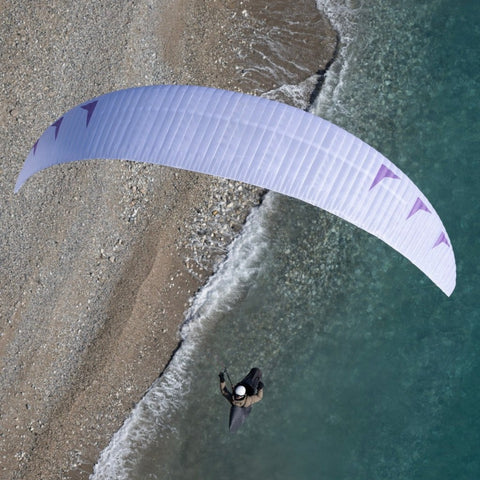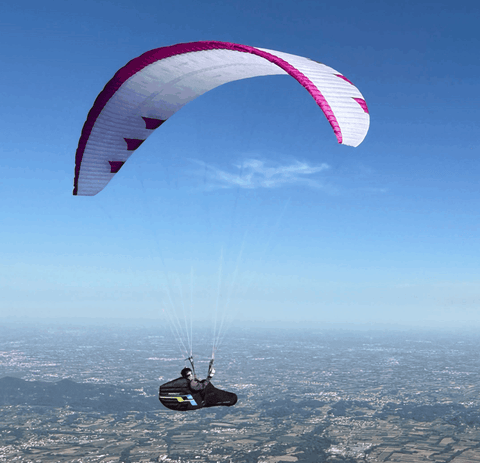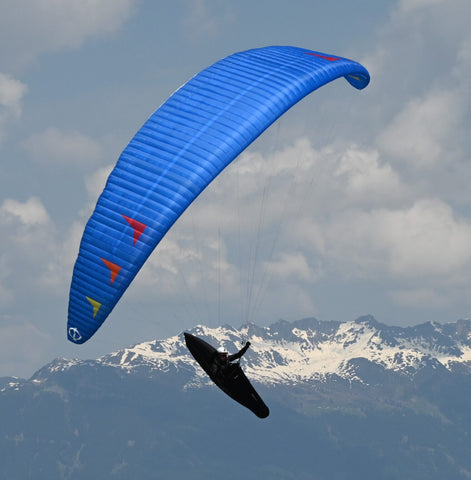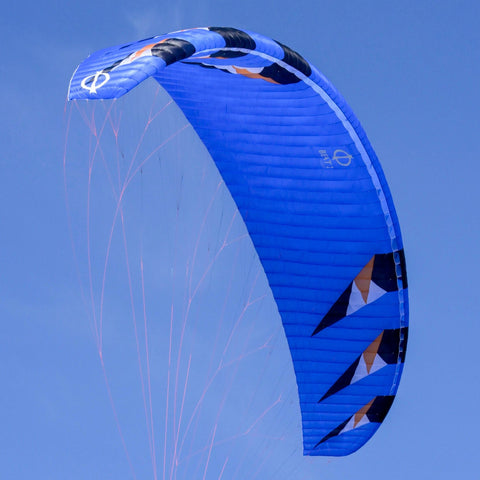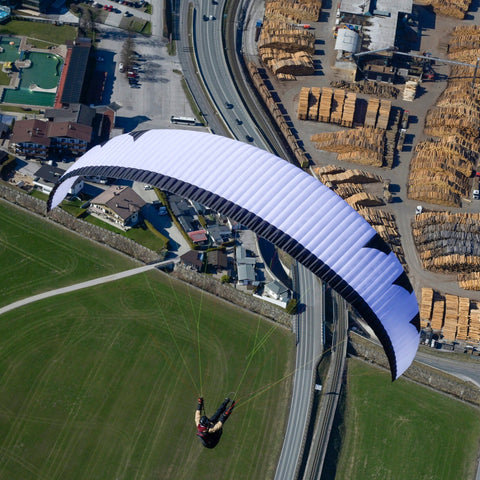PHI Allegro (EN C)
3-liner | cells: 72 | aspect ratio: 6.03 | weight: 4.60 kg – Size 20 (EN/LTF C)

PHI Allegro Fasten your seat belts!
As the name suggests, this wing is agile and dynamic and one thing above all: damn fast. The test pilots were always impressed by how quickly the Allegro picked up the pace. "Flying the ALLEGRO is a hot-blooded experience."
Designer's Note
The ALLEGRO is designed with an aspect ratio of 6 and pilot demands in the low level of the C category. This follows our strategy of taking small steps between each wing model in our range. I’ll save you the usual marketing spiel. You know what kind of performance level to expect from us in the C class!
Hannes Papesh
Reviews
- PHI Allegro - First Impressions
- First XC on the Phi Allegro
- PHI Allegro review by Ziad Bassil (Dust Of The Universe)
Flights
- Hammed Malik 27.6.2020 70.93 km (Xconest)
- First XC on the Phi Allegro 70km (Video)
FEEDBACK - PHI ALLEGRO
I felt a certain high degree of safety under the Allegro while being not too dampened as my latest tested C glider. I personally would choose the Allegro for that feedback and felt! Simply excellent! A pilot upgrading from the Maestro will find the Allegro a super easy C. The Allegro with only a 6 aspect ratio, delivers nice agility, very good authority on the brakes, and excellent gliding performance, especially on the bar! Good in climbing, while having a large passive safety for a C. Ziad Bassil (Dust Of The Universe).
Allegro is just superb! It is a rocket ship! It’s soo confident aspiring! Was throwing it around like I’ve been flying it all my life!!! Only have 6.5h in it... but easily my fav wing. I flew the Allegro again today and MAN! It’s my new favourite wing. Fast! Fun! Dynamic! It’s the perfect coastal wing. Love it! I feel so comfortable in it! Can’t wait for the season to start here. John Spurigan.
It was a pleasure to launch and fly the Allegro. After flying a few different wings in the last few months and then going back to the Allegro I remembered why I love this wing so much I've only flown in relatively mild conditions so far so no idea if it still stumbles in rough conditions. The new risers are amazing! Just the right amount of pressure and you really feel connected to the wing. I used them with the bar a few times and I think once I get used to it, it'll be fun to stay on the bar more often. Hammed Malik.
I was sold about 30 seconds after 'test' launching my Allegro. I've owned 7 wings before the Allegro and never ever had such an instantaneous 'wow, this feels instantly awesome' feeling with any of the others. Kym Fielke
The first flight on the Allegro 21 was a cracker. 65km FAI triangle in the middle of winter. Sold. David Flannery
The stability is fantastic considering the performance and speed on the bar. Easy to control and although I had some collapses it didn’t feel out of control and was lots of fun to fly. Launching and landing was a breeze. All in all, it was a great experience. Daron Brinsdon
First impression. Allegro has 6.03 AR, 72 cells, 8 closed cells on each side, and 56 open cells divided in half with the mini ribs in the leading edge so there is a total of 128 cells in the leading edge. The glider and the leading edge look very sporty. Mini ribs in the trailing edge are long with the same design as the 3D shaping often used on the leading edge. Risers have split As with A1 and A2 lines on one riser and A3 on the separate riser. All A, B, and C lines are thin sheeted lines. Stabilo is the 4th outer line on the B risers and is made from an unsheeted line.
Allegro is floating exceptionally well in light lift, handling is intuitive, and it's easy to track a light lift with this wing. Brake pressure is progressive, it feels lighter than the brakes on the Maestro. I like the brake pressure a lot, the first 1/3 is light with a good amount of response from the glider.
Reverse launching the glider in light wind was easy and predictable. Glider launches as a whole, wingtips are solid during the launch no tendency to lug or pop up before the rest of the wing. The forward launch was straightforward, the glider comes up on its own, it was like forward launching a school wing. The landing is none eventful, there is a lot of brake authority in the final flare. It feels that the glider will look after you in nill wind or slight downwind landings. Landing into the light wind was a child's play. Launching the glider felt like launching any easy-to-launch EN B wing. Landing the Allegro feels easier than landing lower-rated gliders.
The glider is light, and the rods in the leading edge are short. Alegro packs very, very compact. I've packed mine, size M 20 into Gin 2,7 compress bag with ease and an unusual amount of room left when the compressed bag is zipped up. With 4,6 kg for size M 20, sheeted lines, and easy to pack compact volume Allegro has the potential to be the Swiss knife multitool in the EN C class ticking the boxes for EN C comp wing, hike and fly or vol biv glider. Allegro is made from Porcher Skytex 32 so it will be more durable than lightweight gliders made from Porcher Skytex 27. Martin Havel
PHI Allegro is a low EN C glider with 72 cells, and mini ribs in the leading and trailing edges. Miniribs in the leading edge will effectively turn the leading edge in 128 cells leading edge. Allegro uses fewer lines than the older generation of EN C gliders. The reduced number of lines achieves less drag while providing a higher top speed. Glider offers agile direct handling with a solid feel for this easy to fly EN C glider.
Technical Features
The finished ALLEGRO is the result of an intensive optimisation process. Technical features were proven and adjusted to reach our goal: a wing that’s nice and easy to fly with dynamic handling yet also a pureblooded racing machine. In this way, the ALLEGRO has two facets: like a family car that transforms into a formula one beast when you step on the gas pedal. The technical effort to reach this goal was high: 72 cells, with additional mini ribs in the leading- and trailing edge, double zigzag 3D shaping on top and single on the bottom. Plenty of straps inside the wing to offer the best possible load distribution and form stability. Finally, a well-balanced mix of the newest line materials to minimize drag and avoid trim deviation.
The PHI ALLEGRO is designed with an aspect ratio of 6 in the low-level C range. This follows our strategy of taking small steps between the different wing classes, enabling a step-to-step progress.
Technical Specifications
| PHI Allegro (EN C) | 20 | 21 | 22 | 24 |
|---|---|---|---|---|
| Number of Cells | 72 | 72 | 72 | 72 |
| Projected Span (m) | 9.56 | 9.69 | 10.03 | 10.37 |
| Projected Area (m2) | 20.52 | 21.56 | 22.57 | 24.43 |
| Projected Aspect Ratio | 4.46 | 4.46 | 4.46 | 4.46 |
| Flat Span (m) | 12.00 | 12.29 | 12.58 | 13.14 |
| Flat Area (m2) | 23.85 | 25.02 | 26.23 | 28.62 |
| Flat Aspect Ratio | 6.03 | 6.03 | 6.03 | 6.03 |
| Line Length (m) | 7.12 | 7.30 | 7.47 | 7.80 |
| Total Line Length (m) | 249.4 | 256.9 | 262.9 | 273.2 |
| Maximum Chord (m) | 2.48 | 2.54 | 2.60 | 2.72 |
| Minimum Chord (m) | 0.55 | 0.56 | 0.58 | 0.60 |
| Weight (kg) | 4.60 | 4.75 | 4.90 | 5.20 |
| Certified Weight Range (kg) | 75-95 | 83-103 | 90-110 | 105-130 |
| Certification (EN/LTF) | C | C | C | C |
| Material | Porcher Skytex 32 | |||
| Risers | R06 (3+1) | |||
| Riser Length (mm) | 540 | 540 | 540 | 540 |
| Speed System Travel (mm) | 170 | 180 | 180 | 200 |
Weight Ranges

Serial Colours

Scope of Delivery
- Glider
- PHI Harmonica 43 Concertina Compress Bag
- Repair Kit
You have to have the training and a licence to fly a paraglider. Check with your instructor if you are buying your first glider.
We Also Recommend
